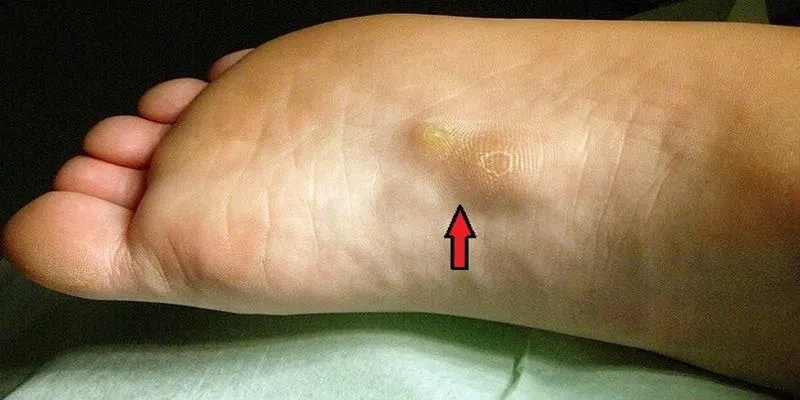What is a Plantar Fibroma?
Understanding plantar fibromas is essential for effective management of this usually uncomfortable growth. In this article, we explore what a plantar fibroma is, along with its causes, symptoms, and available treatment options.
What is a Plantar Fibroma?

A plantar fibroma is a benign growth of the plantar fascia, which is the band of tissue along the bottom of the foot. This fibrous knot or nodule can grow to several centimeters in size and is most commonly found in the arch area of the foot.
Characteristics and Symptoms
Plantar fibromas are typically firm to the touch and can occur in one or both feet. Although they can start small, the growth may enlarge over time. Common symptoms include:
- A visible lump that can be felt on the arch of the foot
- Mild to moderate pain during walking or standing
- Pain from pressure when standing or wearing shoes
- Tenderness to the touch
Causes and Risk Factors
Several factors may predispose individuals to plantar fibromas:
- Genetics: A family medical history of plantar fibromas
- Age: Most cases occur during middle age and beyond
- Gender: Men are at a higher risk compared to women
- Medical Conditions: Diabetes, epilepsy, and thyroid disease can increase risk
Causes and Risk Factors for Plantar Fibromas
Genetic Predisposition
- Genetics play a significant role in the development of plantar fibromas. A family history of the condition increases the likelihood of occurrence, and certain genetic disorders, like Ledderhose disease, may predispose individuals to multiple plantar fibromas.
Trauma and Repetitive Stress
- Plantar fibromas may develop due to injury or chronic stress on the plantar fascia. Activities like distance running or prolonged standing can increase risk.
Age and Gender Considerations
- Plantar fibromas are more common in individuals aged 40 to 60. Males generally have a higher risk than females.
Other Risk Factors
Additional risk factors include:
- Chronic liver disease
- Diabetes
- Epilepsy, particularly if on certain medications
Symptoms and Diagnosis of Plantar Fibromas

Recognizing the Signs
A plantar fibroma manifests as a firm nodular mass on the foot’s arch. Initially painless, it can become painful over time, especially with prolonged walking or standing. It may feel like walking on a pebble or cause tightness in the area.
Diagnostic Process
If you suspect a plantar fibroma, consult a podiatrist or orthopaedist. A physician will conduct a physical exam, feeling the foot to assess the mass’s size, consistency, and location. Diagnostic imaging tests like MRI, ultrasound, or X-rays may be ordered for further evaluation.
Differential Diagnosis
Before diagnosing plantar fibroma, similar foot disorders must be ruled out, including:
- Warts on the sole
- Ganglion cysts
- Neuroma
Treatment Options for Plantar Fibromas
Several treatment avenues exist for plantar fibromas. With a healthcare professional’s guidance, you can choose the best option for your condition.
Conservative Approaches
Conservative treatments often serve as the first line of defense, aiming to reduce symptoms. These include:
- Pain-free stretching exercises to loosen the plantar fascia
- Physical therapy for pain management and muscle strengthening
- Orthotics or custom shoe inserts to redistribute pressure
Advanced Interventions
If conservative treatments are ineffective, more aggressive options may be considered, such as:
- Corticosteroid injections to reduce inflammation and fibroma size
- Medications like Verapamil applied locally to soften the nodule
- Extracorporeal shock wave therapy to stimulate healing and reduce pain
Surgical Options
In severe cases where other treatments fail, surgery may be necessary to remove the fibroma and some surrounding tissue. However, surgery carries risks and does not guarantee the condition won’t return. Discuss the pros and cons with your podiatrist.
Preventing Plantar Fibromas from Developing
While complete prevention is not possible, these tips may help minimize the risk of plantar fibromas:
Maintain a Healthy Weight
Excess body weight increases stress on your feet, heightening the risk of plantar fibromas. Maintain a healthy weight through proper nutrition and regular exercise.
Choose Appropriate Footwear
Wear shoes that provide adequate support and cushioning. Ensure they have proper arch support and avoid those that cause pressure on specific foot areas.
Stretch and Exercise Your Feet
Regular foot exercises and stretching keep your feet strong and flexible. Focus on the plantar fascia and surrounding muscles to increase blood flow and reduce fibroma formation.
Conclusion
While plantar fibromas can cause discomfort, knowledge empowers you to make informed treatment decisions. Understanding the condition and its impact on foot health aids in managing symptoms and improving your quality of life.